Blogs

Understanding UNS R30035: An In-Depth Tutorial on Properties and Applications
Introduction
In the realm of advanced materials, UNS R30035, or MP35N, stands out as a high-performance alloy that meets the rigorous demands of various industries, including aerospace, medical, and oil and gas. Comprised primarily of nickel, cobalt, chromium, and molybdenum, this alloy is celebrated for its exceptional strength, corrosion resistance, and biocompatibility, making it an indispensable choice for critical applications.
As procurement professionals navigate the complexities of sourcing materials, understanding the unique properties and applications of UNS R30035 is essential. This article delves into the alloy’s composition, mechanical properties, industry applications, heat treatment techniques, and compliance with industry standards, providing valuable insights for informed decision-making in procurement strategies.
Introduction to UNS R30035: Overview and Significance
The high-performance alloy UNS R30035, also known as MP35N, is primarily composed of:
- Nickel (approximately 35%)
- Cobalt (approximately 35%)
- Chromium (approximately 20%)
- Molybdenum (approximately 10%)
The alloy UNS R30035 is celebrated for its exceptional durability, ability to withstand corrosion, and biocompatibility, rendering it especially valuable in challenging settings like aerospace, medical devices, and oil and gas sectors.
Furthermore, the DOMADIA Nickel Molybdenum Iron Alloy, consisting of:
- Nickel (Ni)
- Molybdenum (Mo)
- Iron (Fe)
provides outstanding corrosion protection, exceptional mechanical characteristics, and high-temperature stability, positioning it as a top option for uses demanding dependable performance in harsh conditions.
The DOMADIA group, established in Bombay (Mumbai) in 1952, has a legacy of sourcing superiority and a steadfast commitment to delivering unmatched customer satisfaction.
Moreover, for procurement professionals, understanding the significance of non-sparking tools in explosive environments and the role of DOMADIA Oxygen Free Copper (OFE/OHFC) for critical medical components is crucial for enhancing product performance and meeting regulatory standards in sourcing strategies.
Related products include various electrical insulation materials and high-temperature fabrics, which further exemplify the extensive offerings from the DOMADIA group.
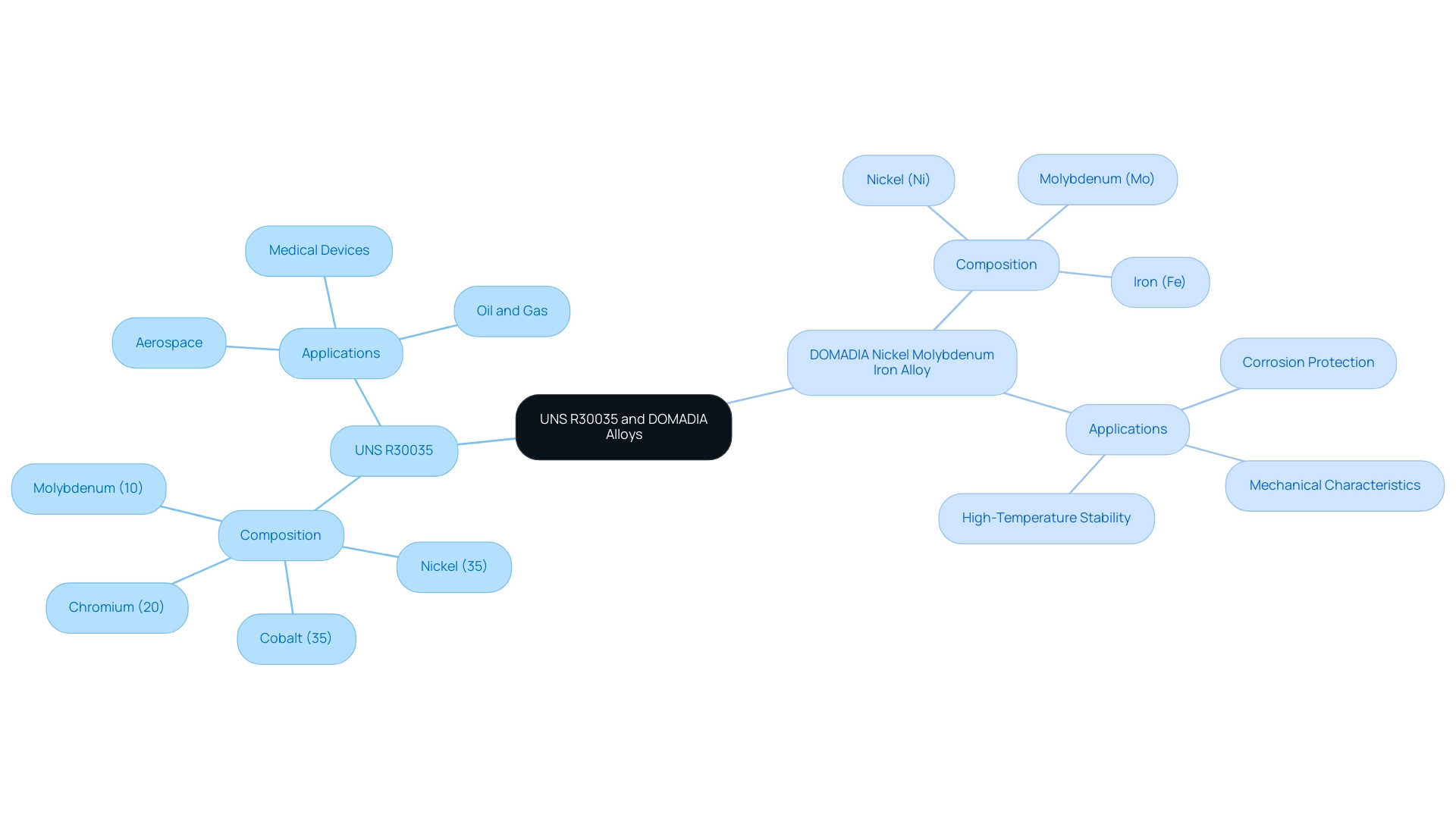
Chemical Composition and Mechanical Properties of UNS R30035
The chemical composition of uns r30035 includes approximately:
- 35% cobalt
- 35% nickel
- 20% chromium
- 10% molybdenum
This unique blend contributes to its exceptional mechanical characteristics, including a yield capacity of around 1,200 MPa and an ultimate tensile capacity exceeding 1,400 MPa. Furthermore, the alloy demonstrates outstanding fatigue durability and opposition to pitting corrosion, making it appropriate for high-stress uses, particularly in applications involving uns r30035.
Moreover, as emphasized in the FAQs, the DOMADIA Nickel Molybdenum Iron Alloy is well-known for its remarkable durability, ability to withstand corrosion, and thermal stability, rendering it a favored option for essential uses across various sectors such as:
- aerospace
- automotive
- petrochemical
- electronics
- renewable energy
Understanding these properties is essential for procurement managers when selecting the right materials to meet specific operational requirements.
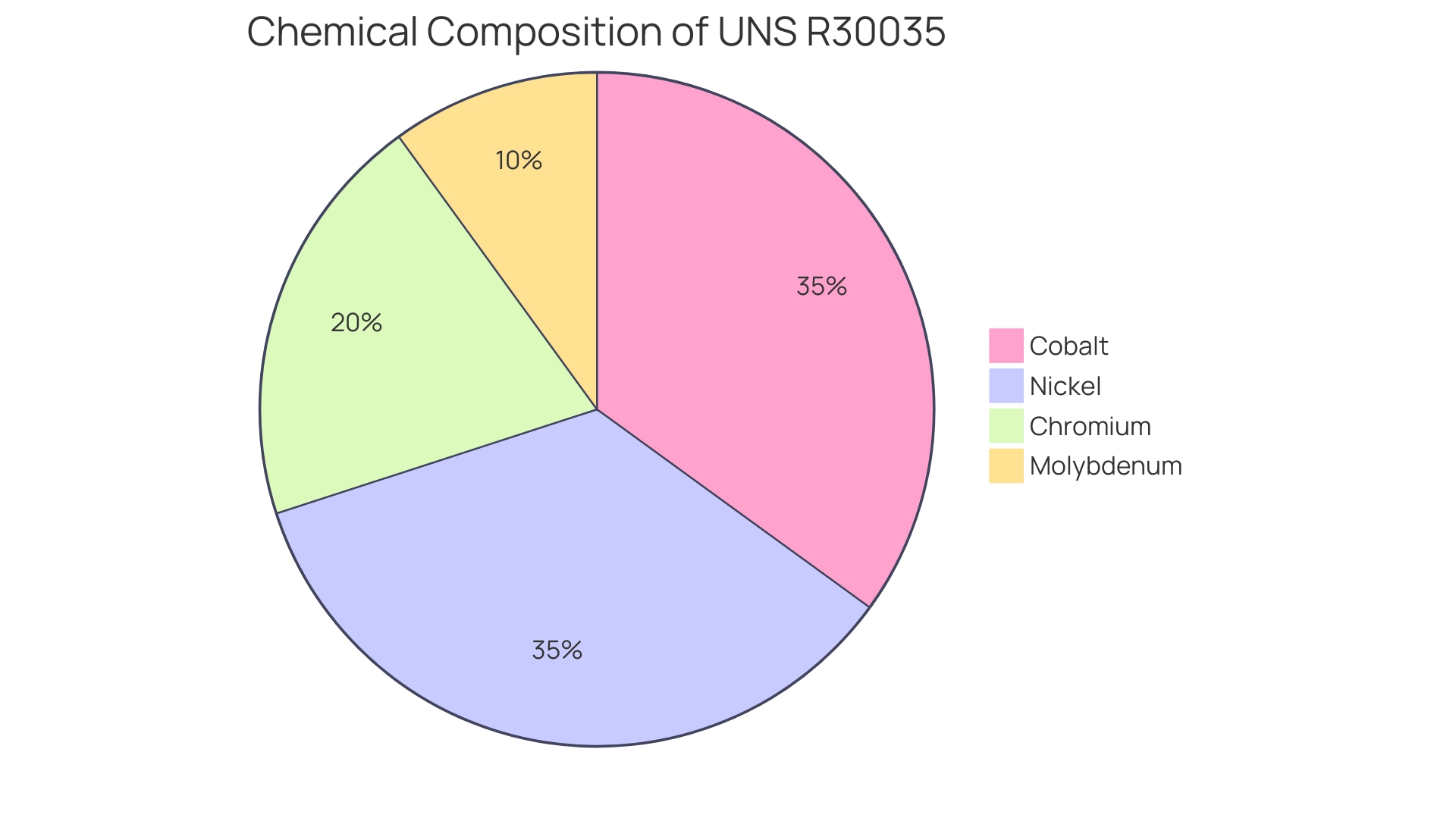
Applications of UNS R30035 in Industry
UNS R30035 is extensively utilized in various sectors because of its exceptional characteristics, which include high durability and excellent corrosion resistance. In the aerospace sector, UNS R30035 is utilized in turbine components and fasteners that require these attributes. In medical uses, it is favored for manufacturing surgical instruments and implants, owing to its biocompatibility, which is critical for patient safety.
Additionally, the oil and gas industry employs UNS R30035 for downhole components that need to withstand harsh environments. Furthermore, for environments with explosive potential, Non-Sparking Tools, known for their durability and non-reactive properties, represent a safe alternative, ensuring that operations can proceed without risk. Similarly, DOMADIA Oxygen Free Copper (OFE/OHFC), noted for its excellent conductivity and non-reactivity, is critical in medical settings, providing reliable, non-reactive components essential for patient safety.
This versatility and safety make these materials crucial for procurement managers to consider across multiple sectors.
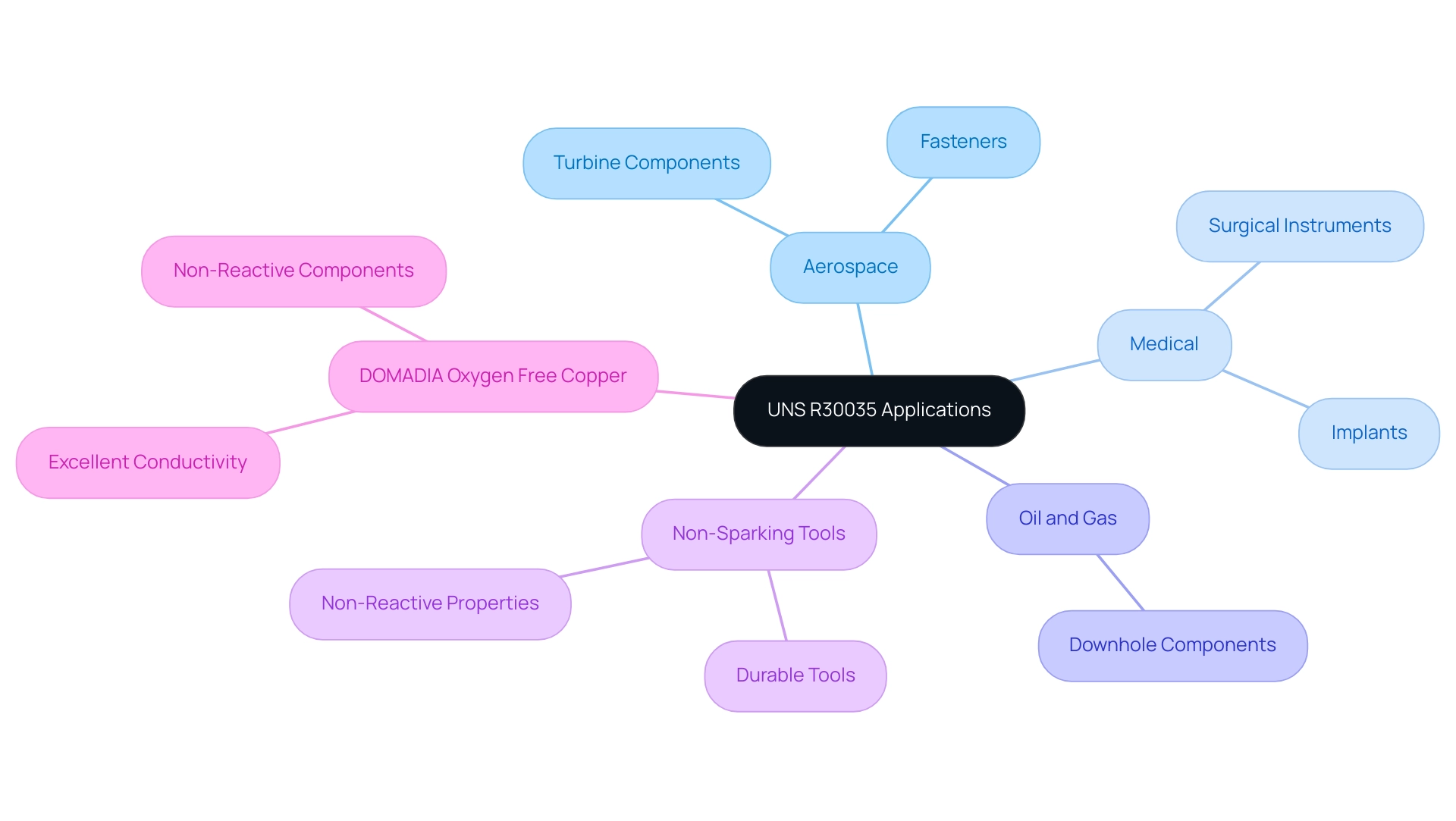
Heat Treatment Techniques for Enhancing UNS R30035 Performance
To enhance the performance of uns r30035, several heat treatment techniques can be applied. Solution annealing is commonly used, where the alloy is heated to approximately 1,050°C and then quenched. This process refines the microstructure, leading to improved strength and ductility.
Subsequent aging at around 800°C further enhances hardness and stability. Grasping these techniques is essential for procurement managers who must guarantee that the materials satisfy particular usage requirements and quality standards. Incorporating Tape products, such as:
- Insulation Tape
- Tape for Electrical
- Sheet Tape
known for their high-temperature durability and electrical insulation properties, can significantly benefit applications across various industries, including aerospace and automotive.
Insulation Tape made from mica provides excellent thermal stability, while Tape for Electrical applications offers superior flame resistance and dielectric strength, making them ideal for critical electrical insulation systems. Sheet Tape is particularly effective for insulating large flat surfaces in challenging environments. Partnering with reputable suppliers of Mica Tape and other high-temperature materials ensures access to reliable insulation solutions tailored to meet stringent specifications.
Testimonials from industry leaders emphasize the effectiveness of these products in enhancing safety and performance in challenging scenarios.
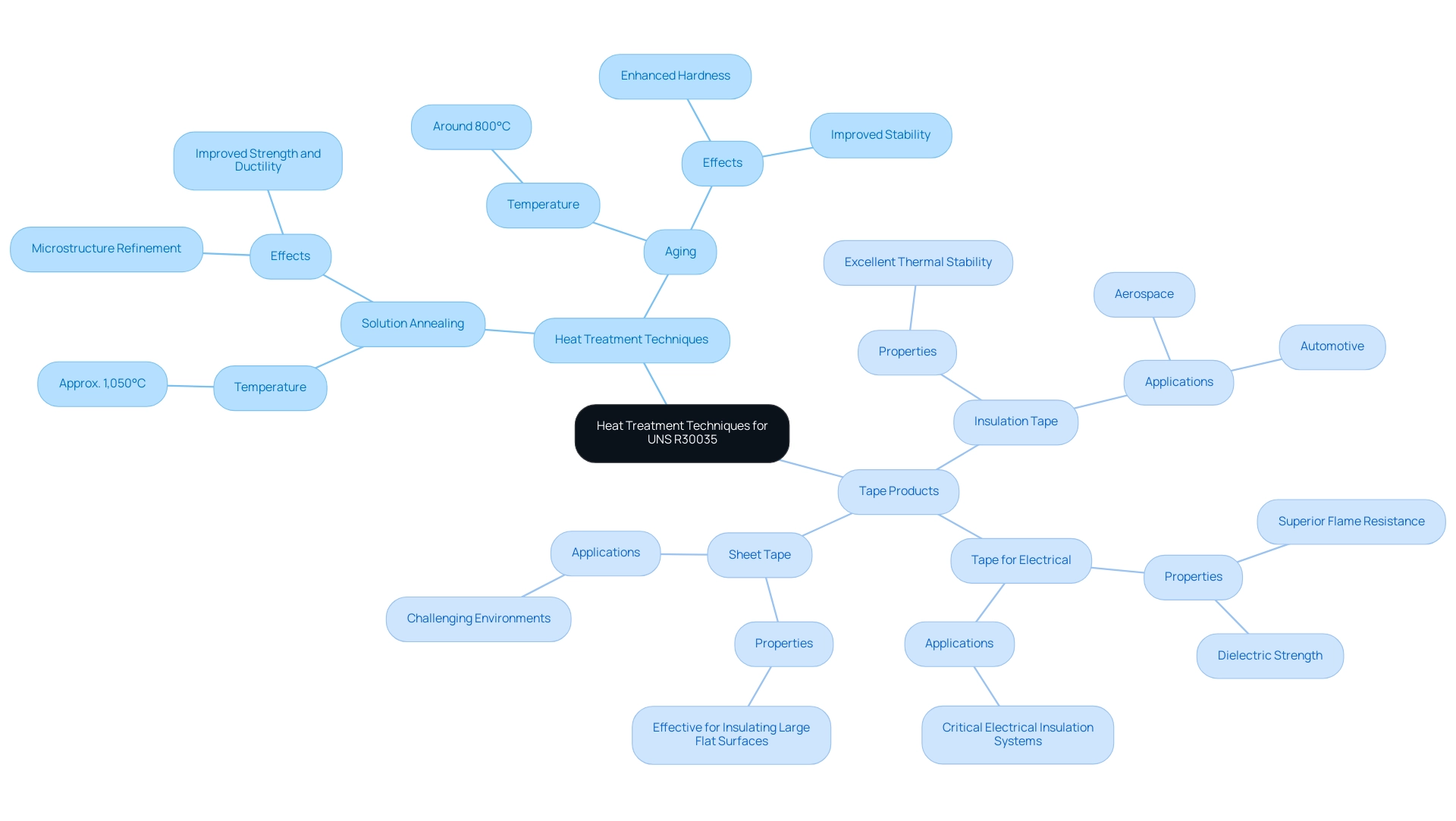
Industry Standards and Specifications for UNS R30035
The alloy uns r30035 meets various industry standards, including ASTM F562 for medical purposes and AMS 5848 for aerospace uses, ensuring that it aligns with stringent performance and safety requirements. In settings with explosive potential, using Non-Sparking Tools is essential to reduce risk, and comprehending their uses is crucial for procurement managers. Furthermore, the use of DOMADIA Oxygen Free Copper (OFE/OHFC) is vital for critical medical components, emphasizing the need for high-quality materials.
Mica tape products, known for their excellent thermal and electrical insulation properties, are particularly beneficial in high-temperature applications, offering flame resistance and dielectric strength. Procurement managers should consider ISO certifications when selecting suppliers of electrical insulation and high-temperature materials, including reputable manufacturers of mica tape and other insulation products. This comprehensive understanding of industry standards and supplier capabilities enables procurement professionals to align their sourcing strategies with regulatory expectations and operational needs.
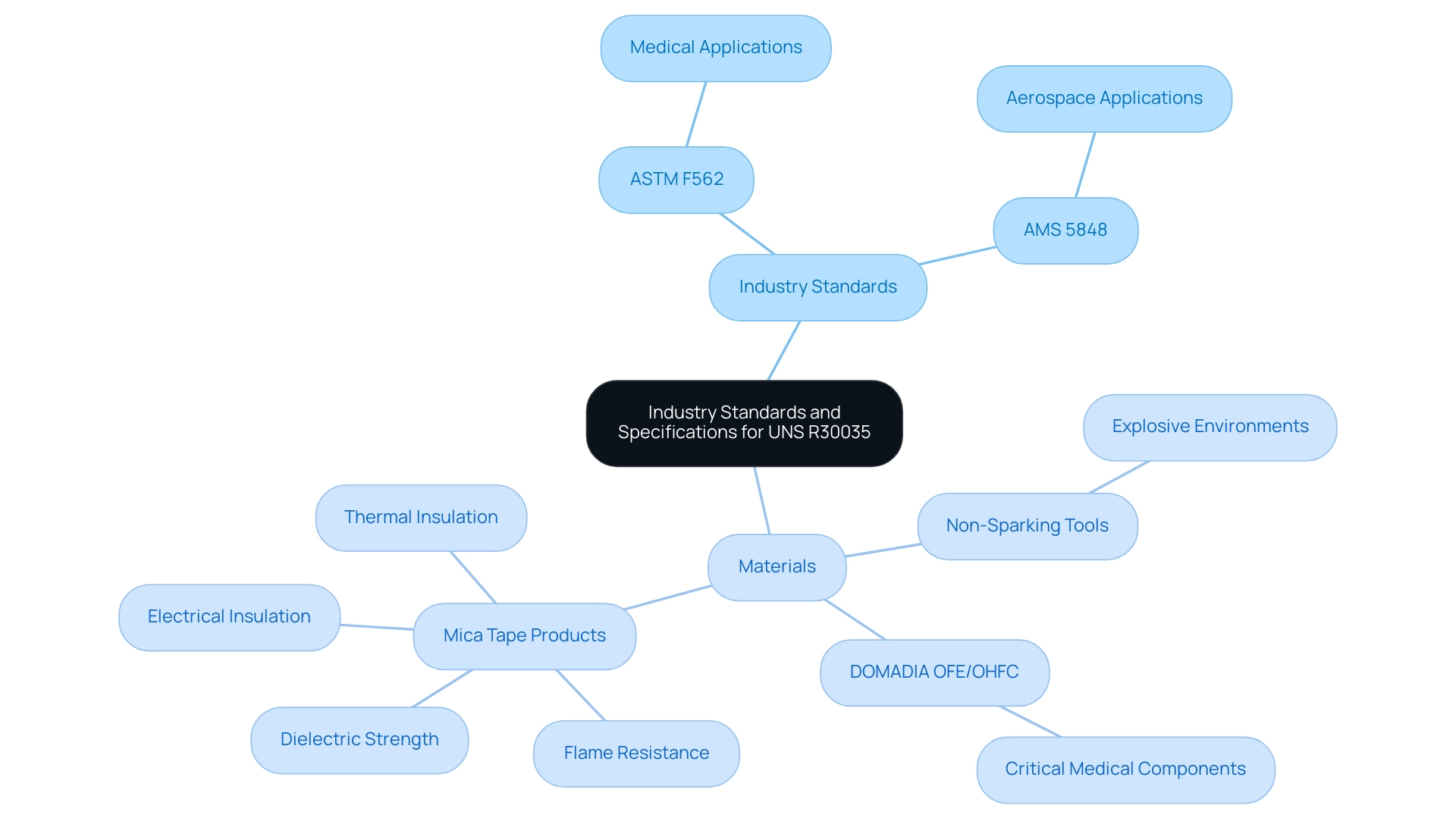
Conclusion
The exceptional properties of UNS R30035, or MP35N, make it a vital material across various high-demand industries, including aerospace, medical, and oil and gas. Its remarkable strength, corrosion resistance, and biocompatibility are critical for applications where performance and safety cannot be compromised. Understanding the alloy’s chemical composition and mechanical properties equips procurement professionals with the knowledge needed to make informed sourcing decisions that meet the unique demands of their industries.
As explored in the article, the versatility of UNS R30035 allows for its application in:
- Turbine components
- Surgical instruments
- Downhole components
where reliability is paramount. Additionally, the incorporation of heat treatment techniques enhances its performance further, ensuring that the material can withstand extreme conditions while maintaining its integrity. Moreover, compliance with industry standards such as ASTM F562 and AMS 5848 reinforces the alloy’s suitability for critical applications, providing assurance to procurement managers regarding quality and safety.
In summary, the strategic selection of materials like UNS R30035 is essential for achieving operational excellence in demanding environments. By prioritizing materials that meet rigorous standards and possess superior mechanical properties, procurement professionals can ensure that their sourcing strategies align with both regulatory requirements and the specific needs of their industries. Recognizing the significance of such high-performance alloys will not only enhance product reliability but also contribute to overall safety and efficiency in operations.




